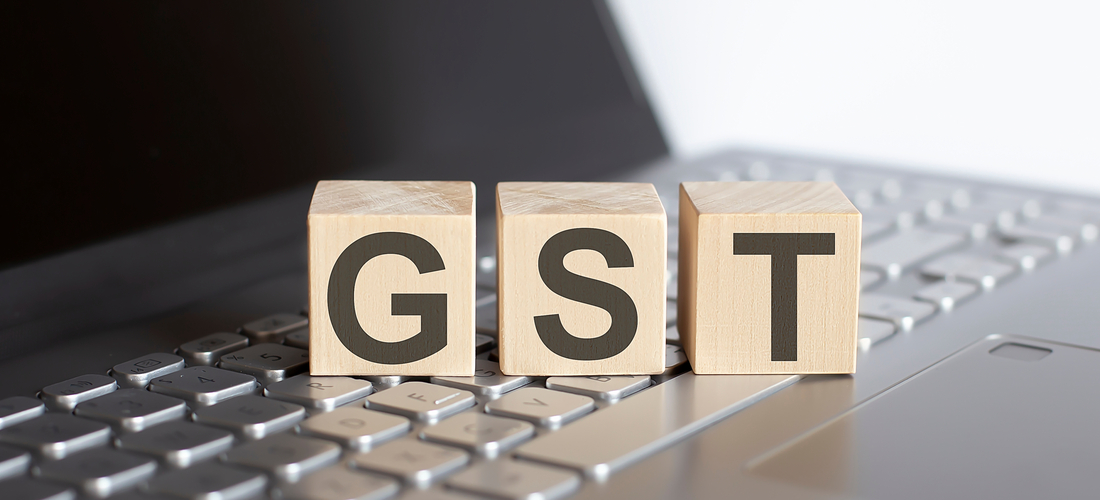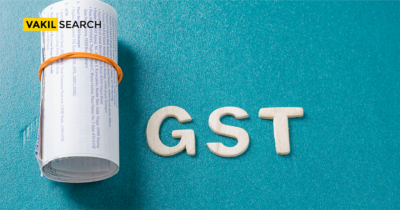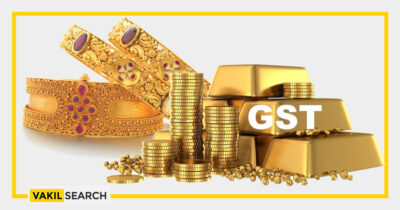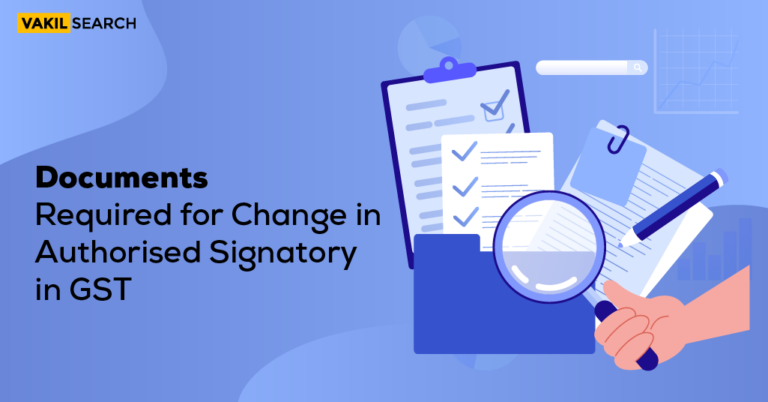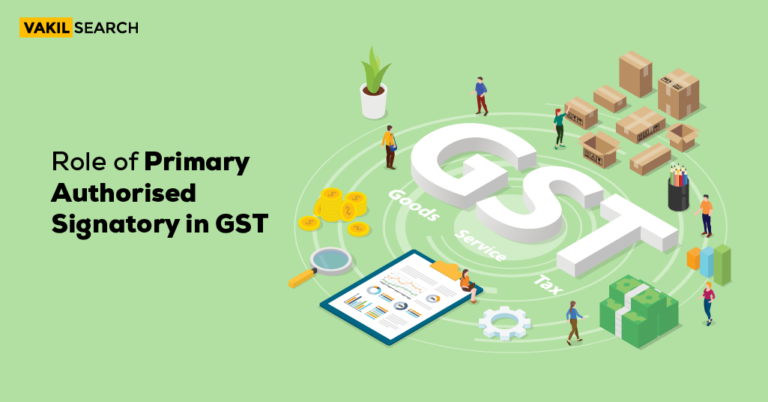The taxpayer must go through a protracted process and provide the GST authorities with the required documentation and declarations in order to receive a claim GST refund.Read this blog to learn more about how to claim a GST refund.
Every taxpayer may request a refund of any taxes, interest charges, fines, costs, or other sums by filing an electronic application, GST RFD-01, via the GST Common Portal or a GST Facilitation Center.
However, the taxpayer can use the GST refund when submitting the returns for the pertinent tax period in FORM GSTR-3, FORM GSTR-4, or FORM GSTR-7 if a refund corresponds to a balance in the electronic cash ledger. The steps involved in requesting a GST refund are thoroughly explained in this article.
When Are You Eligible for a Refund?
According to Section 54 of the GST Act, the taxpayer may need to submit a GST refund claim in any of the following circumstances:
- Tax paid on supplies of goods or services that were zero-rated
- Services or commodities supplied in exports
- The merchandise provided to SEZ units and SEZ developers
- Refund of taxes paid on the sale of items classified as exports
- Tax refunds for purchases made by the UN, embassies, etc.
- Refunding money due to a decision, decree, order, or other directive made by an appeals court, appeals authority, or another court
- Input Tax Credit refund due to inverted duty structure
- Completion of the preliminary evaluation
- Pre-deposit refund
- Overpayment resulting from a mistake
- GST paid on items imported into India and transported outside of India is refunded to foreign visitors at the time of their departure from India.
- Refund because refund vouchers for taxes paid on advances against which goods or services have not been provided have been issued.
- Refunds of CGST and SGST paid on supplies first held as inter-state supplies but were later reclassified as intra-state supplies, and vice versa.
How Does the GST Refund Work?
Handling a GST refund claim has been standardized under the GST laws across India. All applications for GST refunds must be submitted by the taxpayer via the GST Common Portal using a standard form. The user must also submit monthly returns to receive the refund amount in the credit balance.
An acknowledgment for a refund application must be given within 14 days after the application’s submission to be considered valid.
Within 14 days of receiving the refund request, the responsible Officer must inform the applicant of the application’s status. The GST refund request will be returned to the applicant along with a list of any flaws found in the application, and the applicant may resubmit the application if necessary.
The GST refund claims if in order, must be sanctioned within 60 days of the claim’s receipt date, assuming there are no errors or inadequacies. After the 14-day window during which they must handle the GST refund claim, officers are also not permitted to issue deficiency memos.
Payable Interests in cases of Delayed Application
If the taxpayer exceeded the deadlines mentioned above or the required duration, they became responsible for paying interest on the refund amount from the end of the 60-day grace period to the payment date.
Enhance your financial clarity with our GST Calculator Online. Simplify your tax calculations and stay compliant effortlessly.
In meetings conducted on May 18 and 19, 2017, the GST Council suggested 6% and 9% interest rates, respectively. In any case, if the taxpayer paid a pre-deposit for a refund claim before an appeals court, the interest is due starting from the day the payment was made.
How Does the Refund Process Take Place?
By submitting an electronic application in the form GST RFD-01 via the GST Common Portal or a GST Facilitation Center, any taxpayer may ask for a refund of any taxes, interest payments, fines, fees, or other sums. But suppose a refund corresponds to a balance in the electronic cash ledger. In that case, the taxpayer can use the GST refund when submitting the returns for the relevant tax period in FORM GSTR-3, FORM GSTR-4, or FORM GSTR-7.
What Are the Documents Required while Filing a GST Return?
-
Statement of Important Bills
The applicant must keep and submit the documentation to receive a GST refund. A statement of relevant invoices pertaining to the claim must be submitted with every GST refund request.
According to GST regulations, the taxpayer must keep the invoice they submitted for a minimum of 7 years.
-
For services associated with export business:
The taxpayer must present the required bank realization certificates proving the receipt of payment in foreign currency in order to claim the reimbursement for services exported.
-
Regarding Products Made for SEZ Units:
The person in question must present an endorsement from the Proper Officer proving receipt of the products or services related to the SEZ if the supplier requests a GST refund for an SEZ unit.
Additionally, a certification from the SEZ unit confirming the supplier’s tax payment’s unclaimed input tax credit is required as part of the procedure. However, the application must include a statement with the invoice if the applicant wants to request a refund for the accrued input tax credit.
-
Refund based on the judgement:
The reference number of the order giving rise to the refund should be supplied along with the GST refund request if a claim is made for a GST refund as a result of any order or judgement of an appellate authority or court.
-
Refund Request for Unfair Enrichment:
When requesting a refund of fewer than 2 Lakhs after exceeding the unjust enrichment threshold, the taxpayer must provide a self-declaration confirming that no one else has benefited from the tax incidence.
-
Certification of a Chartered Accountant:
A certificate from a Cost or Chartered Accountant is required for reimbursement claims that are more than ₹2 lakhs. However, suppose the GST claim is for zero-rated supplies. In that case, accumulated input tax credit, payment of the incorrect tax (integrated tax instead of central tax and state tax, or vice versa). In this claim, supply is not made, or if a refund voucher has been issued, a CA or Cost Accountant certificate is not required.
What follows the application for the GST refund?
The application submitted by a taxpayer or refund applicant will appear as a pending work item on the tax officer’s or refund processing officer’s dashboard. He or she will check the application and the supporting documentation carefully.
The “Track Application Status” link under Refunds allows you to keep track of submitted applications. The refund money will be credited to the applicant’s bank account following an inspection by a GST authority.
The officer will take the following actions:
- For some reimbursements, a provisional refund may be provided on form RFD-04. It must be issued within seven days of the acknowledgement date, with at least 90% of the claimed refund amount approved.
- If the application for the reimbursement is complete in every way, an acknowledgement in form RFD-02 will be sent within 15 days after applying.
- In form RFD-01W, the applicant now has the option to withdraw their request for reimbursement. Deducted from the taxpayer’s electronic credit or cash ledger upon filing the refund application, the refund will be credited to the appropriate ledger after the withdrawal application has been submitted.
FAQ:
What is a GST refund?
A GST refund is a repayment of the GST that a taxpayer has paid in excess. This can happen for a number of reasons, such as Excess tax paid on exports, Excess tax paid due to an inverted duty structure, Excess tax paid due to a mistake in the tax return
Who is eligible to claim a GST refund?
The following taxpayers are eligible to claim a GST refund exporters, taxpayers who have made zero-rated or exempt supplies, taxpayers who have accumulated excess input tax credit (ITC), Taxpayers who have paid GST in excess due to a mistake in the tax return.
How can I claim a GST refund?
To claim a GST refund, you need to file an online application on the GST portal. You will need to provide supporting documents, such as invoices, shipping bills, and bank statements.
What are the common reasons for a GST refund application rejection?
The following are some of the common reasons for GST refund application rejection: Incomplete or incorrect information in the application form Lack of supporting documents Mismatch between the information in the application form and the supporting documents Non-compliance with the GST laws.
Can I claim a refund for both IGST (Integrated GST) and CGST/SGST (Central GST/State GST)?
Yes, you can claim a refund for both IGST and CGST/SGST. However, the refund for IGST will be processed by the Central Government, while the refund for CGST/SGST will be processed by the State Government.
Conclusion
Taxpayers must fill out the Refund Pre-application form to provide details about their company. As per the legal advisors at Vakilsearch, you must keep the Aadhaar number, income tax information, export information, expenditure and investment information, and so forth. The taxpayer must submit this pre-application form for all sorts of GST refunds.
Read More:


